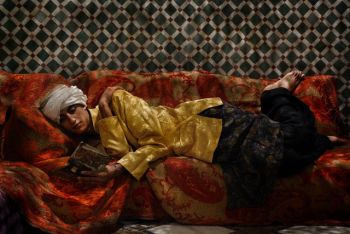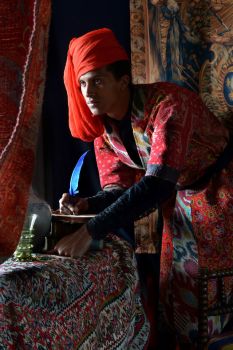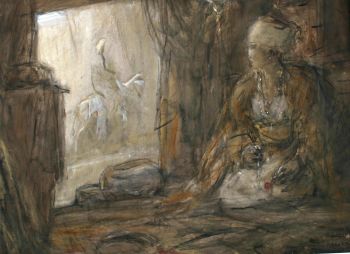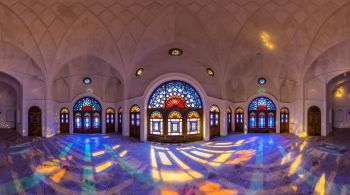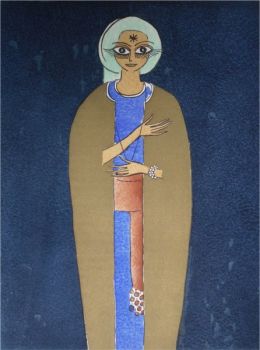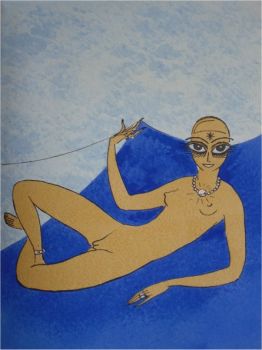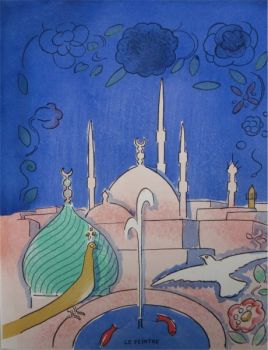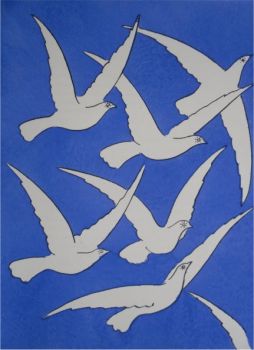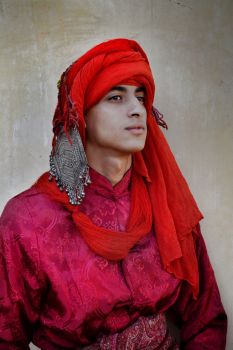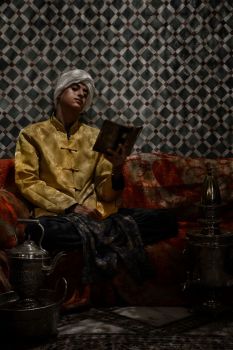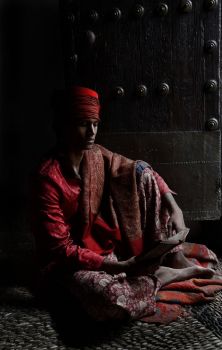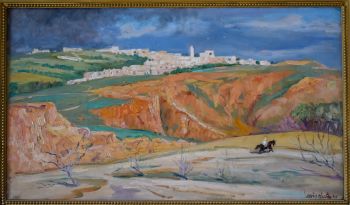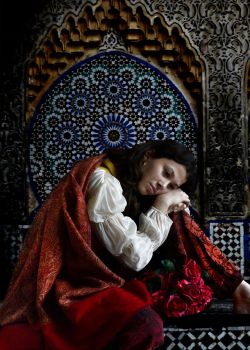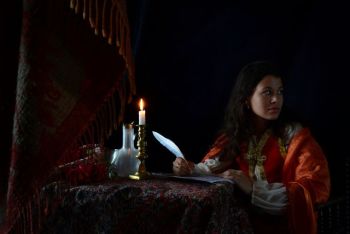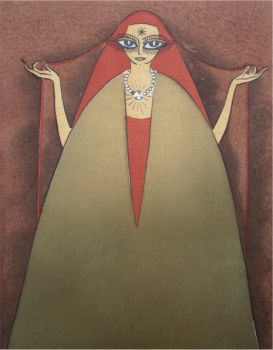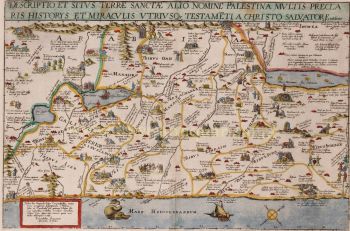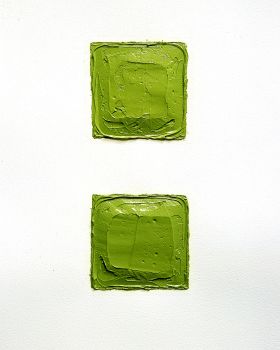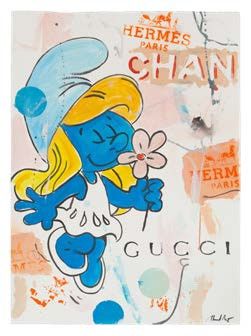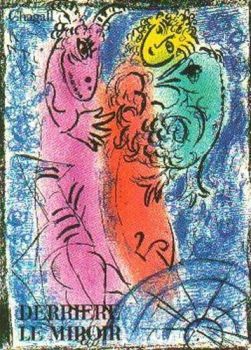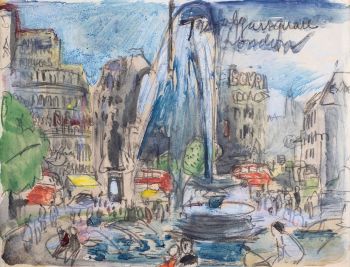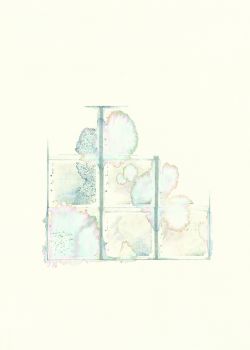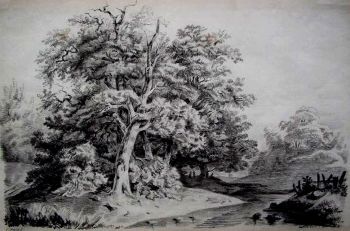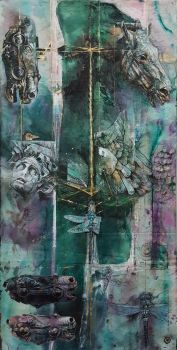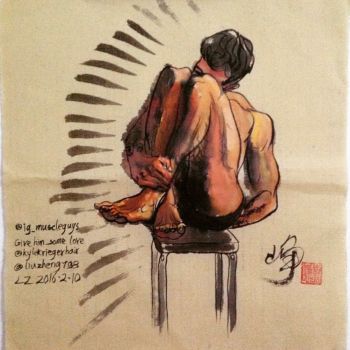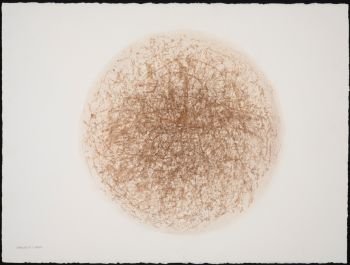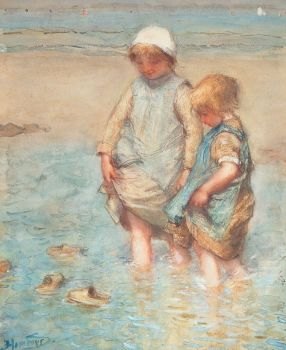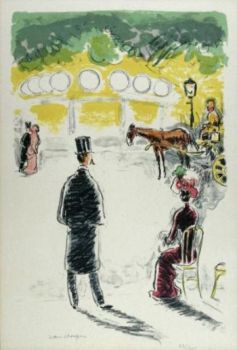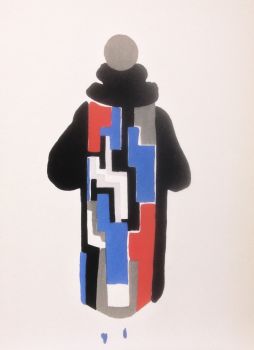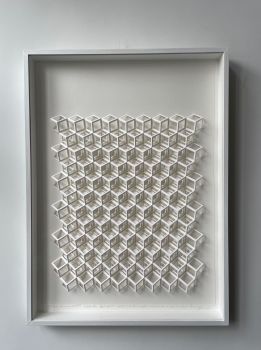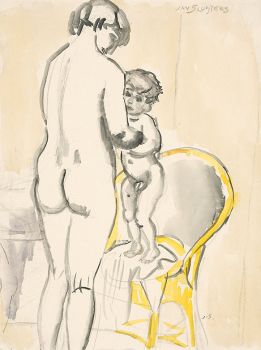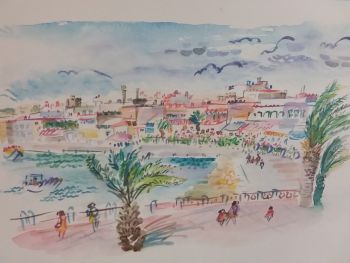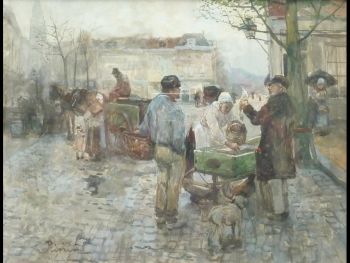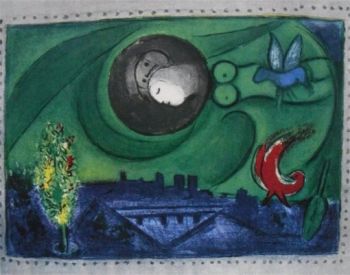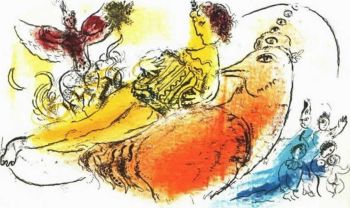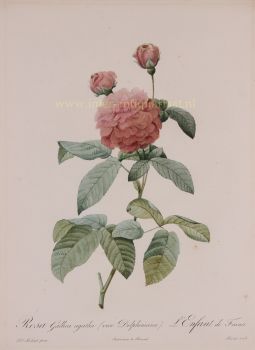782 Arabic proverbs collected before 1817, with explanatory notes 1830
Johann Ludwig Burckhardt
Paper
28 ⨯ 22 cm
Currently unavailable via Gallerease
- About the artworkArabic proverbs, or the manners and customs of the modern Egyptians, illustrated from their proverbial sayings current at Cairo, translated and explained ...
London, John Murray (colophon: printed by C. Roworth), 1830. Large 4to (28 x 22 cm). With a large folding engraved map of the Sinai, the Holy Land and parts of Egypt and Syria, showing Burckhardt's travels, and a few small woodcut illustrations in the text. Set in roman and italic type with the proverbs also in the original Arabic. Mid-19th-century half tan calf, spine with gold-tooled bands.
First edition of a ground-breaking trove of 782 Arabic proverbs, published here in the original Arabic with English translations and (sometimes extensive) explanations of their meaning. Burckhardt took some from a collection assembled by the Egyptian scholar Shered ad-Din Ibn Assad, adding others "as he heard them quoted in general society or in the bázár ... Several Scriptural sayings and maxims of ancient sages will be found here naturalized among Arabs; as well as some Proverbs which have generally been supposed of European origin" (preface). This makes the present publication an essential primary source for Islamic, Egyptian and Arabic oral history, preserving popular proverbs collected before 1817.
The Swiss explorer, orientalist and archaeologist Burckhardt (1784-1817) travelled through Syria, Jordan, Egypt, Nubia and the Arabian Peninsula, and rediscovered the ancient city of Petra. Disguised as an Arab, he crossed the Red Sea to Jeddah under the name "Sheikh Ibrahim", passed an examination in Muslim law and participated in a pilgrimage to Mecca and Medina.
With bookplate. Endpapers browned, slightly affecting the title-page, last page and folding map, but otherwise in very good condition. Binding somewhat worn and scuffed, but structurally sound. An expert Arabist's annotated collection of Arabic sayings, giving insights into Arabic culture.
Gay 1963; Howgego, 1800-1850, B76. - About the artistJohann Ludwig Burckhardt, also called Ibrāhīm Ibn ʿabd Allāh (born Nov. 24, 1784, Lausanne, Switz.—died Oct. 15, 1817, Cairo, Egypt) was a Swiss traveller, geographer, and orientalist. He is best known for rediscovering the ruins of the ancient city of Petra in Jordan. Burckhardt went to England in 1806. He studied Arabic, science and medicine at Cambridge University in London. In 1809 he left England and travelled to Aleppo Syria
to perfect his Arabic and Muslim customs. Afterwards he went on a journey to the regions south of the Sahara, via Fezzan, now the southwestern sector of Libya. When he was on the way from Syria to Cairo in 1812, he discovered the important archaeological site at Petra, in modern Jordan. In Cairo he found no reliable caravan to Fezzan; hence he decided to travel up the Nile. In so doing he discovered the imposing rock temple Abu Simbel. Then he traveled through Arabia, visiting Mecca. He went back to Cairo where he died, still waiting for a chance to cross the Sahara.
Artwork details
Related artworks
Tilmanus Nicolaus Maastricht
Missale Romanum with Dutch silver mounts1788 - 1792
Price on requestJacob J. Roosjen SRI
Antonie Derkinderen
Memory book Exhibition of Dutch Painting1892
Price on requestKunsthandel Pygmalion
Engelbert Kaempfer
ENGELBERT KAEMPFER BOOK1651 - 1716
Price on requestZebregs & Röell - Fine Art - Antiques
Yoko Ono
YOKO ONO: "ARISING" SIGNED BOOK PLUS SMALL ARTWORK 2010 - 2014
Price on requestGallerease Selected
Hermann Nitsch
"UNDER MY SKIN" Signed book incl. small artwork and DVD in a matching box2010 - 2014
Price on requestGallerease Selected
Tilmanus Nicolaus Maastricht
Missale Romanum with Dutch silver mounts1788 - 1792
Price on requestJacob J. Roosjen SRI
Engelbert Kaempfer
ENGELBERT KAEMPFER BOOK1651 - 1716
Price on requestZebregs & Röell - Fine Art - Antiques
LAWRENCE WEINER
"SKIMMING THE WATER [MENAGE A QUATRE]" Signed book plus small artwork2010 - 2014
Price on requestGallerease Selected
1 - 4 / 22Unknown artist
IMPORTANT AND RARE LARGE INDIAN 'COMPANY STYLE' PAINTING ON IVORY DEPICTING A PARADE1850 - 1900
Price on requestZebregs & Röell - Fine Art - Antiques
 Curated by
Curated byDanny Bree
Elisabeth Treskow
Afghan lapis lazuli inlaid with gold on a silver stand1950 - 1960
Price on requestJacob J. Roosjen SRI
1 - 4 / 24- 1 - 4 / 24

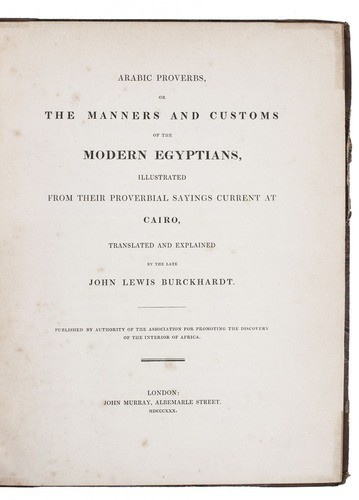


















!["SKIMMING THE WATER [MENAGE A QUATRE]" Signed book plus small artwork by LAWRENCE WEINER](https://media-2.gallerease.com/images/442bfd5f-fc31-4e18-a2fa-ee0c08eade64/350x350/skimming-the-water-menage-a-quatre-signed-book-plus-small-artwork.jpg)



